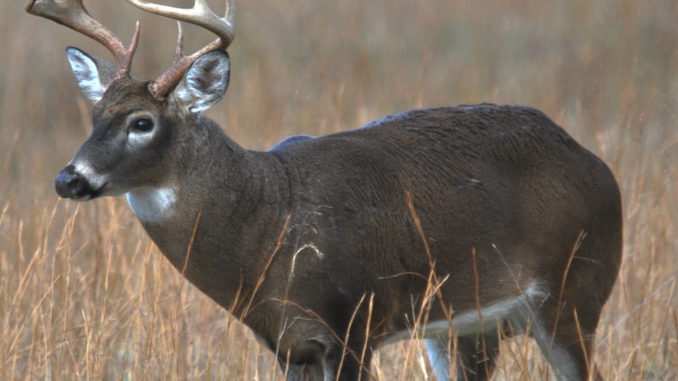
Group says regulation changes do not protect against Chronic Wasting Disease enough
The North Carolina chapter of Quality Deer Management Association recently raised concerns about the N.C. Wildlife Resources Commission proposed regulation changes that would relax restrictions on importing pen-raised deer into North Carolina and may open the door for Chronic Wasting Disease to enter the state.
The Commission unveiled several proposals (H23, H24, H25, H26, H27) – that are backed by the state’s deer-farm industry – during September public hearings that would allow easier transport of pen-raied deer, elk, moose or exotics into North Carolina.
Previous regulations, set up to minimize the risk of importing CWD, banned all imported cervids and even halted their movement from pen to pen inside state lines. The poposals regulation changes would modify or discard those rules.
The Commission will hold a Nov. 8 meeting in Raleigh to approve or disapprove captive-cervid proposals. Sportsman may comment at the agency’s web site by going to www.ncwildlife.org and following the links at the scrolling bar at the bottom of the home page.
“It is my belief that proposed changes to the captive cervid program will increase North Carolina’s risk of introducing Chronic Wasting Disease, which is lethal to deer, undiagnosable without killing the animal, and which has lasted in the soil of CWD-infected areas for years,” said Judy Gardner of North Carolina’s chapter of QDMA. “North Carolina is not prepared — in terms of resource or cost of remediation — to add this risk to its burden. Make no mistake — every North Carolina sportsman will feel CWD’s impact.
Gardner pointed out that CWD has spread to states almost exclusively by cervids imported by deer farmers, yet the proposals would relax such restrictions. She said monetary gain by deer farmers is the main reason for the proposals.
“Captive-deer facilities use controlled, artificial-breeding technology to primarily produce whitetail bucks with enormous, often grotesque antlers, for profit — an industry that includes sales of semen, artificially-impregnated does, and live bucks to other breeders or to captive-deer shooting facilities,” Gardner said.
“Distribution maps of CWD suggest the disease likely arrived in several new states through transportation of live deer, either legally or illegally, and not through natural deer movements. Legalizing deer breeding in new areas increases the incentive for illegal transportation of untested animals at a time when these human-aided movements must be stopped.”
Gardner said the impact of CWD, if it becomes established in North Carolina, would be expensive and long-term.
Gordon Myers, the Commission’s executive director, admitted meeting with officials of the N.C. Deer and Elk Farmers Association before these proposals surfaced.



